Iran's nuclear program at 'extreme danger' level, think tank warns
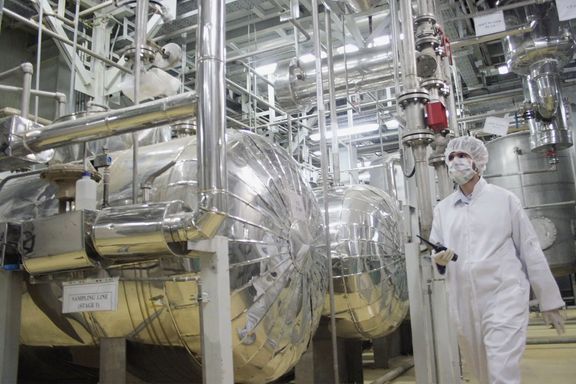
Iran's nuclear threat has worsened to an "extreme danger" level since last year, according to a new report by a US-based research institute.

Iran's nuclear threat has worsened to an "extreme danger" level since last year, according to a new report by a US-based research institute.
“Since February 2024, the date of the last edition of the Geiger Counter, the threat posed by Iran’s nuclear program has worsened significantly,” the Institute for Science and International Security (ISIS) said in its report published Tuesday.
The Geiger Counter is an assessment tool used by the institute to measure the threat posed by Iran to the United States and its allies, focusing on its potential to develop nuclear weapons.
The report cited several factors contributing to its finding, including Iran’s increased nuclear capabilities, shorter timelines to develop nuclear weapons and growing internal discussions about weaponization.
It raised concerns over Iran's continued development of advanced centrifuges and the possibility of secret enrichment plants. Iran's non-cooperation with the International Atomic Energy Agency (IAEA) and the ongoing military conflicts in the Middle East have further intensified fears of the country’s nuclear ambitions, the report said.
The report raised Iran’s overall threat score to 157 out of 180, up from 151 in February 2024, indicating "Extreme Danger."
The report comes as Washington and Tehran prepare for indirect talks on reaching a nuclear deal, with US President Donald Trump announcing the negotiations will begin on Saturday.

As nuclear talks resume and threats from the US and Israel continue, Iran’s atomic chief claims the country’s electricity shortages will be solved by building new nuclear power plants.
Nuclear power currently accounts for just one percent of Iran’s electricity generation. To make up for the country’s 25,000-megawatt shortfall, Iran would need to build 25 nuclear plants the size of Bushehr—which took 25 years to complete, even with Russian assistance.
Since its launch in 2011, the Bushehr nuclear plant has produced just 70 terawatt-hours (TWh) of electricity—worth less than $6 billion on regional markets. This modest output contrasts sharply with Iran’s extensive uranium enrichment program, which has been justified as necessary for nuclear power generation but has contributed to at least $2 trillion in direct economic losses from sanctions since 2012.
The Islamic Republic has repeatedly announced plans to develop 20,000 megawatts of nuclear power capacity, but progress has been minimal. Atomic Energy Organization chief Mohammad Eslami has reiterated the goal, describing it as a “long-term” objective.
It remains unclear why Iran, with over 300 sunny days a year and vast windy coastal and mountainous regions, has not prioritized solar and wind energy—especially given that the cost of electricity from renewables is now comparable to that of nuclear power. Despite this potential, renewables still account for just one percent of Iran’s electricity production.
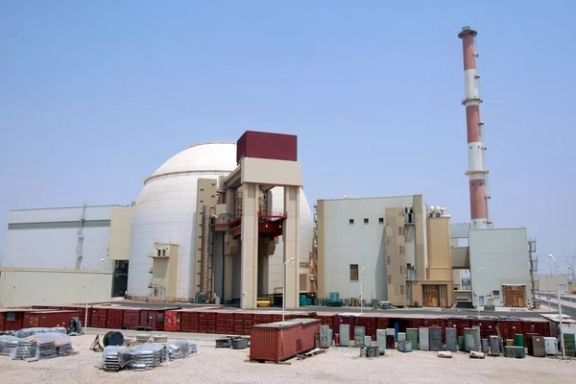
By contrast, the International Energy Agency recently reported that 75% of new global power capacity in 2024 came from renewable sources, while nuclear contributed only 5% to the growth in global electricity production last year.
Iran’s electricity and gas shortages now span all seasons
For the first time, Iran is experiencing electricity and gas shortages year-round, with blackouts beginning as early as spring—where previously they were confined to the peak of summer and winter.
This year’s electricity deficit is so severe that all provinces, including Tehran, are facing scheduled 90-minute blackouts during the day. The situation in the industrial sector is even worse. A petrochemical industrialist in Tabriz told Iran International—on condition of anonymity—that his factory endures two full days of power cuts and one day of water outages each week. In addition, daily 90-minute blackouts continue to disrupt production.
These outages are happening despite spring electricity demand being 35% lower than in summer, averaging around 50,000 megawatts (MW). With peak summer demand looming, there are serious doubts about the country’s ability to cope.
While Iran’s installed power generation capacity is officially around 62,000 MW, its failure to meet even current demand suggests a deeper crisis—most likely a fuel shortage for thermal power plants, which supply over 90% of the country’s electricity.
Gas shortages have also become a year-round issue since last year, and now electricity has followed the same pattern.

According to the Ministry of Energy, around 800,000 new electricity consumers are added to the grid annually since 2010—70% of them residential. To keep pace, Iran needed to boost electricity production by about 7% per year. In practice, only half that target was achieved over the past decade, and in recent years, production growth has fallen to just 30% of planned levels.
As a result, Iran’s net annual electricity exports have fallen from 8 Twh in the mid-2010s to zero over the past two years — with domestic production no longer sufficient to meet internal consumption.
Hydropower generation
Iran’s nominal power generation capacity stands at around 94,000 megawatts (MW), but only 62,000 MW is actually operational. The gap is due to the decommissioning of aging thermal plants and reduced output from hydroelectric facilities amid ongoing drought conditions.
In an attempt to mitigate the electricity shortfall, the government increased hydropower production by 25% over the past two years. However, this came at a cost: water levels in key dams—some of which supply drinking water to major cities, including Tehran—have dropped to just 7–10% of capacity. As a result, the country’s ability to rely on hydropower has been nearly exhausted.
Thermal power plants
Over the past 15 years, nearly all growth in Iran’s electricity supply has come from thermal power plants running on natural gas, fuel oil (mazut), and diesel. These plants now generate over 90% of the country’s electricity.
However, Iran is facing critical fuel shortages year-round, making it increasingly difficult to supply these plants. Compounding the problem, many of the facilities are outdated and inefficient, operating well below global standards.

It’s not just the low efficiency of power plants that is driving the electricity crisis. According to an official report from the Ministry of Energy, 13% of the electricity produced is lost in the country’s old and deteriorating transmission and distribution network.
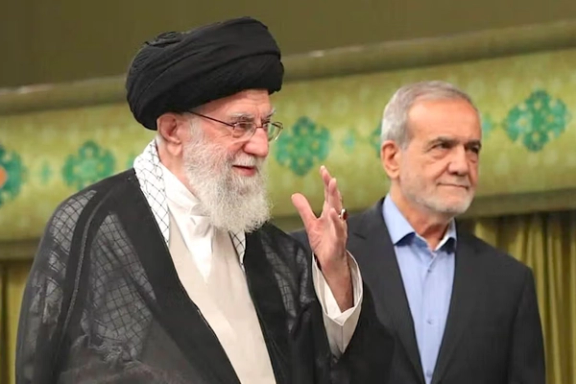
Supreme Leader Ali Khamenei’s decision to drop his longstanding opposition to talks with the United States drew criticism from some Iranians that the veteran leader capitulated under pressure in order to retain power.
The reaction came after Iran International invited public responses to the reversal in Khamenei’s stance, asking why he would now consider negotiations he previously called “unwise, undignified, and dishonorable.”
One respondent, in a video message to Iran International, referenced the leader’s earlier rhetoric: “You said negotiating with America is dishonorable. Now do you realize you’re without honor?”
US President Donald Trump on Tuesday confirmed the start of high-level, direct talks with Iran, following his meeting with Israeli Prime Minister Benjamin Netanyahu.
“We’re dealing with them directly and maybe a deal is going to be made,” Trump said, warning that if not, “Iran is going to be in great danger”.
Tehran is set to hold negotiations with Washington in Oman on Saturday.
In the face of criticism from inside and outside government, Iranian officials continued to frame the diplomatic channel as indirect. Foreign Minister Abbas Araghchi told state TV, “What America is doing is dictating. We believe indirect talks are more effective”.
Fatemeh Mohajerani, the administration’s spokesperson, also said the negotiations, while advanced and significant, remain indirect for now. “We have to begin the process to see where it leads, but the format remains non-direct,” she added.
Still, the public remains unconvinced by the government’s attempts to save face. Several respondents accused Khamenei of misleading the population over years of opposition to the US, only to retreat under duress.
“They lied about indirect negotiations for so long,” one person said in a voice message. “Now they should admit they were wrong.”
Others tied the capitulation to a fear of system collapse in the wake of the Women, Life, Freedom movement which has seen a mass movement against the government since 2022.
“Khamenei agreed to talk because he fears ending up like Gaddafi or Saddam,” another one said.
One man argued the stakes had now grown too high, just last month, Trump threatening to bomb Iran if a new deal was not agreed upon within two months. “Khamenei has no choice but to sit at the table. He knows if war breaks out, the same youth he wants to send to fight won’t aim at America or Israel—they’ll aim at him," he said.
Criticism also targeted the perceived hypocrisy of the leadership. “You used to accuse protesters of collaborating with hostile governments,” said one voice message addressed to Khamenei. “Now you’re negotiating with the very government you called hostile.”
Another message addressed Khamenei directly: “You’re a coward ruining the lives of over 80 million people. Now that you've suffered a defeat and backed down, even your own followers can see how cowardly you are.”
A separate voice message even accused the leader of backpedaling so much that he risked a total turnaround of decades of anti-US and anti-Israel animosity.
“Khamenei redefines words. Even ‘honor’ means something different to him,” the speaker said, before adding, “Soon he’ll be on his way to kiss Netanyahu’s hands.”
An overwhelming sense of "humiliation" has dominated the messages received by Iran International.
“This is humiliation. Khamenei once vowed neither war nor negotiation. Now there’s negotiation, no deal, and he still has to go," another Iranian said.
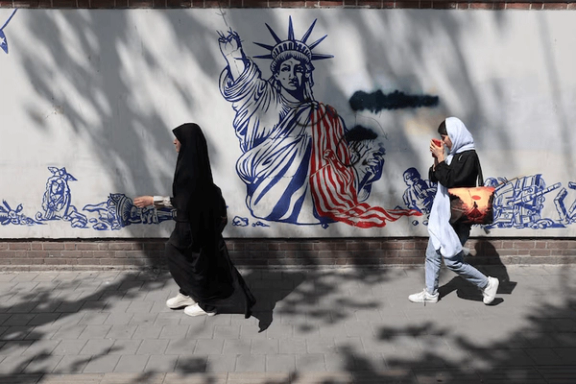
Iran’s conservative factions are concerned upcoming talks with the United States could extend beyond the nuclear file and may involve additional demands such as disarming Tehran’s regional allies that remain deeply contentious.
Hardline publication Khorasan cautioned that Iranian negotiators must guard against what it called mission creep, particularly in the face of US efforts to shift the agenda toward direct talks.
Iran insists the Oman discussions will focus solely on its nuclear program and officials in Tehran have ruled out negotiations on regional issues or its ballistic missile capabilities.
However, US officials may press for a broader agenda. An executive order US President Donald Trump signed in February called for curbs on Iran’s ballistic missile program and an end to its support for allied groups across the region, such as the Houthis in Yemen.
The group, designated a terrorist organization by countries such as the US and UK, is currently engaged in a tit-for-tat battle with the US amid its blockade of shipping in the Red Sea region.
Khorsan also warned that the talks should not overtake national priorities, including the country's economic crisis, the worst since the founding of the Islamic Republic in 1979. Iran has been demanding the quick lifting of US sanctions that have devastated the economy.
The publication wrote that "diplomacy is not a solution to the country’s core problems".
On the eve of talks this week, President Masoud Pezeshkian, speaking on National Nuclear Technology Day, reiterated Iran’s rejection of nuclear weapons.
“They [UN inspectors] have checked us a hundred times. Check again. We are not after the bomb,” he said. “We need nuclear science. They want us weak, but we will stand tall through knowledge.”
US President Donald Trump has warned of bombing Iran if Tehran fails to reach a new deal over its nuclear program, giving a two month deadline, without stating when that ends.

The main headline on the front page of a conservative Iranian newspaper captures the national mood ahead of the upcoming Iran-US talks in Oman: “The Saturday of Hope and Doubt.”
Across two dozen newspapers on Wednesday, the sentiment was echoed in varying language—hope for a breakthrough tempered by uncertainty over whether the two sides will meet face to face and make tangible progress.
Gholamhossein Karbaschi, a prominent politician and proprietor of the centrist daily Ham Mihan, told the press that “if Iran’s political system had no intention of negotiating with the United States, it would not have responded to Trump’s letter.” In Iranian political discourse, “the political system” is often used as a stand-in for Supreme Leader Ali Khamenei.
Karbaschi added, “Some believe a revolutionary stance means constant confrontation and chanting slogans. But the people want a peaceful life. Breaking the current deadlock requires self-sacrifice from the negotiators.”
He urged negotiators to ignore the hardline rhetoric, alluding to MP Amir Hossein Sabeti, who recently said negotiations are unlikely to change anything, as well as to vigilante groups threatening to rally outside the Foreign Ministry.
At the same time, Hadi Borhani, an expert in Israeli affairs, sought to reassure the public in an interview with Khabar Online, saying that Israel must now operate within the limits set by President Trump. He added that Prime Minister Benjamin Netanyahu was likely caught off guard by Trump’s remarks about engaging in negotiations with Iran. Nonetheless, Borhani emphasized that Israel remains firmly opposed to the talks in Oman.
Meanwhile, reformist commentator and political analyst Ahmad Zeidabadi described the upcoming talks as a prelude to a potential reset in Tehran-Washington relations. He said the primary goal of this round of negotiations is to end the longstanding hostility between the two countries.
However, Zeidabadi cautioned that the Muscat talks cannot continue indefinitely. “There is a limited time frame for these negotiations, and their outcome—success or failure—could have far-reaching consequences,” he warned, calling the talks “extremely sensitive, critical, complicated, and fragile.”
Commenting on the fragility of the negotiations, the IRGC-affiliated daily Javan warned that “one word from Trump about Iran’s missile power will abruptly end the talks.” The paper argued that the most Iran can realistically offer is a reduction in uranium enrichment levels in exchange for the full lifting of sanctions.
Meanwhile, Hesamoddin Ashna, former deputy intelligence minister and adviser to President Hassan Rouhani, cautioned Iran’s leaders against “behaving like Qaddafi’s Libya” or entertaining illusions of leading the Arab and Muslim world. He also warned against overstating the strategic value of Iran’s outdated nuclear technology.
Elsewhere, the conservative newspaper Farhikhtegan predicted that internal divisions over how to approach negotiations with the US could reshape Iran’s political landscape—particularly within the conservative camp, where opposition to the talks remains strong.
Iran’s former security chief Ali Shamkhani emphasized the strategic value of the country’s nuclear program in a post on X, writing: “Iran’s peaceful nuclear capability is a complete chain from mine to final product—not just a scientific achievement, but a vital driver for medicine, energy, agriculture, and the environment. This national technology is stabilized, irreversible, and indestructible.”
Meanwhile, the debate over direct versus indirect negotiations continued. Vali Nasr, professor at Johns Hopkins SAIS and author of Iran’s Grand Strategy: How Sanctions Work, argued on X that while Trump created a bottleneck by insisting on direct talks, this approach could actually work in Iran’s favor. “Both sides will probably start the talks indirectly but eventually shift to direct negotiations,” Nasr wrote. Echoing Iranian Foreign Minister Abbas Araghchi, he added that “the form of the talks is less important than their content.”
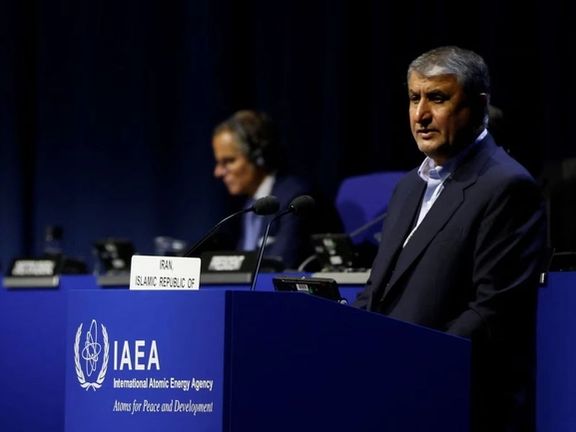
Iran’s nuclear chief announced late Wednesday that Rafael Grossi, director of the International Atomic Energy Agency (IAEA), is expected to visit Tehran around April 20, likely to address unresolved issues related to monitoring Iran’s nuclear activities.
Mohammad Eslami gave no details about the purpose of Grossi’s trip, but the visit comes as Iran continues to restrict the UN watchdog’s access to its nuclear facilities—a limitation in place since 2021. The timing suggests a possible link to the upcoming nuclear negotiations with the United States, set to begin Saturday.
Eslami also underscored what he described as Iran’s nuclear progress, claiming the country has achieved uranium enrichment without any foreign assistance and is the only nation with a fully indigenous nuclear program.
US President Donald Trump on Wednesday reiterated his warning that military action remains on the table if Iran refuses to halt its nuclear activities, adding that Israel would play a leading role in any such operation.
“I’m not asking for much … but they can’t have a nuclear weapon,” Trump told reporters during a press event at the White House, following the signing of several executive orders. He warned that if diplomacy fails, military measures could follow.
“If it requires military, we're going to have military,” he said. “Israel will, obviously, be … the leader of that. No one leads us. We do what we want.”
Trump declined to give a timeline or specific conditions for when military action might occur, saying only, “When you start talks, you know if they’re going along well or not. And I would say the conclusion would be when I think they’re not going along well.”
The comments come just days after Trump made a surprise announcement that direct talks between Washington and Tehran are set to begin Saturday. He warned on Monday that Iran would face “great danger” if negotiations fail to produce a breakthrough on its nuclear program.
The Biden-era nuclear negotiations collapsed in 2022, and since returning to office, Trump has taken a more aggressive stance, demanding that Iran completely abandon its uranium enrichment efforts that have reached an alarming stage, with high levels of uranium enrichment. Tehran has continued to insist on its right to peaceful nuclear development.